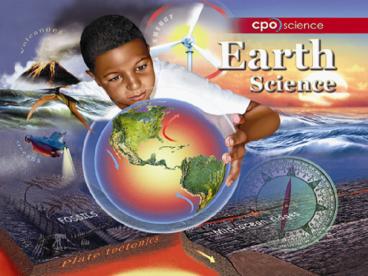Introducing Earth - PowerPoint PPT Presentation
1 / 19
Title:
Introducing Earth
Description:
Introducing Earth Chapter Nine: Earth and Time 9.1 Relative Dating 9.2 Geologic Time 9.1 The beginnings of geology In 1666, Nicholas Steno, a Danish anatomist ... – PowerPoint PPT presentation
Number of Views:51
Avg rating:3.0/5.0
Title: Introducing Earth
1
(No Transcript)
2
Introducing Earth
3
Chapter Nine Earth and Time
- 9.1 Relative Dating
- 9.2 Geologic Time
4
9.1 The beginnings of geology
- In 1666, Nicholas Steno, a Danish anatomist,
studied a sharks head and noticed that the
sharks teeth resembled mysterious stones called
tonguestones.
5
9.1 Evidence from Rock
- Steno theorized that tonguestones looked like
sharks teeth because they actually were sharks
teeth that had been buried and became fossils.
6
(No Transcript)
7
9.1 What is relative dating?
- Stenos principles are used by geologists to
determine the age of fossils and rocks in a
process called relative dating. - Relative dating is a method of sequencing events
in the order they happened.
8
9.1 What is relative dating?
- James Hutton (17261797) showed how processes
today might explain what happened a long time
ago. - For example, grooves left behind by flowing
rainwater helped explain the formation of the
Grand Canyon from the Colorado River.
9
9.1 Superposition
- Stenos ideas for relative dating include
superposition, original horizontality, and
lateral continuity. - Superposition states that the bottom layer of
sedimentary rock is older than the layer on top
because the bottom layer formed first.
10
(No Transcript)
11
Rock layers may bend or shift and are found
standing vertically, or tilted, or rolled into
curves.
12
9.1 Lateral continuity
- Horizontal layers of rock are continuous.
- By comparing rock layers in the Grand Canyon,
geologists have found that the layers on one side
of the canyon match up with the layers on the
other side.
13
(No Transcript)
14
9.1 More relative dating
- The idea of cross-cutting relationships states
that a vein of rock that cuts across a rocks
layers is younger than the layers. - The middle and top layers formed after the bottom
layer but before the vein.
15
(No Transcript)
16
9.1 Faunal succession
- Faunal succession means that fossils can be used
to identify the relative age of the layers of a
rock formation. - The organisms found in the top layers appeared
after the organisms found in the layers below
them.
17
9.1 Fossils and Earths changing surface
- Most of the land on Earth was part of a large
landmass called Pangaea about 250 millions of
years ago.
18
9.1 Fossils and Earths changing surface
- Fossils provide evidence for how Earths surface
has changed over time. - Scientists map fossil locations.
- Understanding Earths past helps explain how
similar plants and animals ended up in different
locations.
19
(No Transcript)































![[PDF] Introducing the LSAT: The Fox Test Prep Quick & Dirty LSAT Primer Paperback – December 25, 2012 Full PowerPoint PPT Presentation](https://s3.amazonaws.com/images.powershow.com/10078410.th0.jpg?_=202407130910)